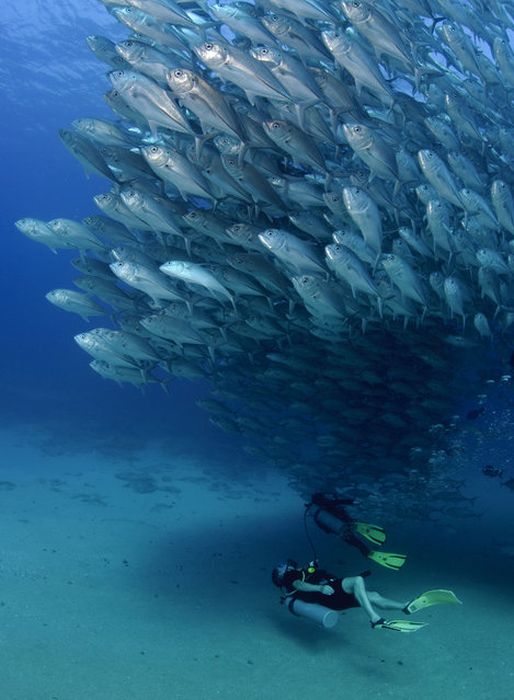|
|
Bigeye Trevallies Schooling, Cabo Pulmo National Park, Cabo San Lucas, Baja Peninsula, Mexico
|
Distribution and habitat
The bigeye trevally is widely distributed throughout the tropical and subtropical waters of both the Indian and Pacific Oceans. In the Indian Ocean, it ranges from South Africa and Madagascar in the west, along the east African coastline up to both the Red Sea and Persian Gulf. Its range extends east along India, South East Asia, Indonesia and many offshore Indian Ocean islands. The range extends north to Japan and south to Australia in this central Indo-pacific region. In the Pacific Ocean, the bigeye trevally inhabits most of the tropical island groups including Hawaii, with its range extending east to the western American coastline. In this eastern region of its distribution it has been recorded from the American state of California in the north, including the Gulf of California, and south to Ecuador and the Galapagos Islands.
The bigeye trevally predominantly live in inshore coastal waters, although does occur in pelagic settings far offshore, and around remote islands and seamounts. The species is known to reach depths of around 100 m. It is mostly found over coral and rocky reef complexes as adults, however often moves into more inshore areas in sandy bays and lagoons in small numbers. Those that live offshore often live on deeper seamounts or reefs around offshore islands. The species moves with the tide in some regions, entering shallow lagoonal areas as the tide rises, and moving back to the deeper reefs as it retreats. Juveniles inhabit more inshore, shallower waters around the coast, often venturing into lagoons, tidal flats, mangrove zones and even estuaries. Juvenile bigeye trevally have been reported in rivers from several locations, and are known to penetrate well into the upper reaches of rivers. As the fish grows, it moves back to deeper waters over reefs. The species has been reported in pelagic open ocean settings, milling around stationary buoys, indicating the species may follow floating debris far out to sea.
|
|









